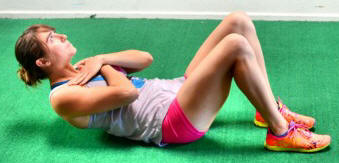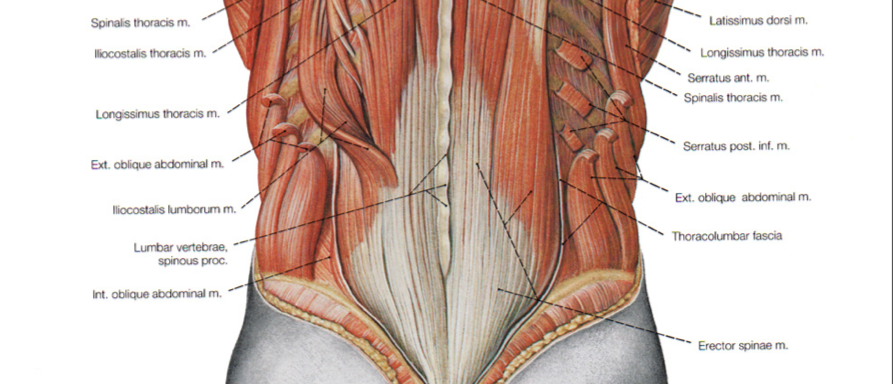Thorax
Flexion - Extension
Flexion There is limited amount of motion in the thoracic region due to
stability of the trunk, but there is still some motion occurring. The
reason for limited
motion in the thoracic spine is due to the attachment of the ribs on the
thoracic vertebrae themselves along with small and rigid vertebral discs. The
most thoracic flexion (bending forward) occurs in the lower thoracic spine
because the vertebrae start to orient their facets similar to the lumbar spine
where the most flexion and extension occurs. Also the lower thoracic spine is
not as cemented in place by the floating ribs.
Range of motion: 30-40°
Extension Beside returning to the neutral position from a flexed
position, thoracic extension (bending backward) is practically inexistant.
Range of motion: 0°
Thoracic Rotation

Thoracic rotation refers
to the rotary movement of the spine on the transverse plane. ... Each vertebra
is capable of moving in three directions (back and forth, lateral flexion, androtation),
and even though the movement at each joint is small, the spine as a single
structure has great flexibility and range of motion.
Range of motion: 30° It is difficult to separate from the
lumbar rotation (RoM of 15°) which together will produce a rotation of around
45° of the shoulder relative to the pelvis.
Thoracic flexion: Rectus Abdominis, Internal Obliques, External Obliques.
Thoracic extension: Longissimus Thoracis, Iliocostalis Thoracis, Spinalis
Thoracis, Semispinalis Thoracis,
Rotatores Thoracis.
Thoracic rotation: Internal Obliques, External Obliques, Iliocostalis,
Multifidus, Rotatores.


Mobility tests:
Thorax.
Thoracic and Lumbar spine mobility are considered together here.
Strength tests
:
Thorax.
Thoracic and Lumbar spine strength are considered together here.
Posture evaluation: Look for poor alignments in all planes.
FMS:
Trunk Stability, trunk
should remain stable and straight.
Rotary Stability: spine should be
mobile enough to avoid influencing balance.
Thoracic Rotation
Trunk torsion while running will
reduce performance in sprinting, and increase the risks of injuries.
The rotation of the hips and counter rotation of the thorax should be limited to
a few degrees. Tension will be present to stabilize the trunk but should
not result in separation between pelvis and shoulders.
Corrective measures
Strength:
All Thorax
Strength exercises.
Shoulder-hip separation for throws
 is
a good thing (as per photo). Hips are first rotated while the shoulders
are kept back creating a torsion of the trunk, the separation shoulder-hip.
This allows more time to the trunk to accelerate the shoulders and the
implement. The lack of separation might be caused by a lack of mobility of
the spine (either or both lumbar and thoracic).
is
a good thing (as per photo). Hips are first rotated while the shoulders
are kept back creating a torsion of the trunk, the separation shoulder-hip.
This allows more time to the trunk to accelerate the shoulders and the
implement. The lack of separation might be caused by a lack of mobility of
the spine (either or both lumbar and thoracic).
Corrective measures
Mobility:
Seated Spinal
Twist,
Laying Thoracis Spine Rotation





 is
a good thing (as per photo). Hips are first rotated while the shoulders
are kept back creating a torsion of the trunk, the separation shoulder-hip.
This allows more time to the trunk to accelerate the shoulders and the
implement. The lack of separation might be caused by a lack of mobility of
the spine (either or both lumbar and thoracic).
is
a good thing (as per photo). Hips are first rotated while the shoulders
are kept back creating a torsion of the trunk, the separation shoulder-hip.
This allows more time to the trunk to accelerate the shoulders and the
implement. The lack of separation might be caused by a lack of mobility of
the spine (either or both lumbar and thoracic).